AAPI Staffers Cite Rejections, Being Ignored
Revival of Antiracist Paper Looking for Editors
Baron Rejects Claims About His Diversity Record
Who Needs Men on Editorial Boards?
. . . McClatchy Wants Community Advisory Boards
Breonna Taylor Case Is Subject of Graphic Novel
Bill Campbell, Chicago TV Veteran, Dies at 70
Homepage photo by Christina Matacotta for the Atlanta Journal-Constitution
Support Journal-isms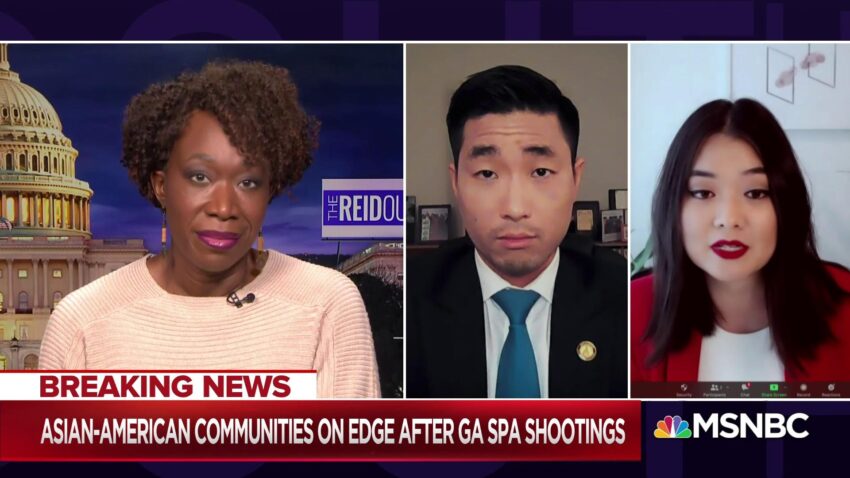
AAPI Staffers Cite Rejections, Being Ignored
In covering the Atlanta area shootings that last week claimed eight lives, including those of six Asian American-Pacific Islander (AAPI) women, critics accused the news media, especially in the early reporting, of:
- too quickly giving the benefit of the doubt to law enforcement’s regurgitation of the suspect’s claim that the shootings were not related to race;
- not having enough Asian Americans on staff to properly report on the victims, although as activist Michelle Kim noted, some victims and their families, feeling vulnerable, did not want their names publicized.
- possessing a mindset that reflexively sends cameras and reporters to Chinatown, even though most Asian Americans live elsewhere.
But perhaps the most troubling for those concerned about newsroom diversity is a statement from the Asian American Journalists Association that even when Asian Americans are in the newsroom, they aren’t listened to. It’s why some have altered the concept of “diversity” to “diversity, equity and inclusion” — DEI.
In a statement Thursday, the AAJA’s Broadcast Advisory Council said:
“ ‘Are you sure your bias won’t show if you cover the Atlanta shootings?’
“ ‘You might be too emotionally invested to cover this story.’

“We have heard from broadcast members — and from members across newsrooms who volunteered to cover the Atlanta shooting — who have expertise, language skills, and the cultural competency in the community, but were not assigned. AAJA urges newsrooms to offer coverage opportunities to AAPI journalists who are uniquely positioned, sourced and skilled to cover the unfolding news — and who want to be a part of it. . . .
“At the same time, we have heard from many of our members who are the only, or one of few, AAPIs in the newsroom, who have asked for nuanced coverage of the shooting story and been rejected. The burden of being ‘the only one’ in the newsroom creates a professional and emotional toll on these journalists who may feel responsible for representing the entire AAPI community, often without the leadership titles to make editorial or staffing decisions.
“While AAPI journalists can be an invaluable resource — and we commend newsrooms who recognize and empower AAPI journalists — the entire newsroom must also do the work of learning more about the communities they cover. . . .”
Last year, Camille Bromle, a contributing editor at the Columbia Journalism Review, asked Russell Jeung, a professor of Asian-American studies at San Francisco State University, “How do you think mainstream media serves Asian Americans in general?“
Jeung replied, “They tend to neglect us. And again, stereotype us. They’ll do stories about Chinatown in places where most people don’t live in Chinatowns. They’ll go to the same spokespersons all the time rather than get real people’s perspectives. The hard thing is talking to people in their language, so they can be more eloquent and more well spoken.
“That’s the hard thing — not having enough language access to the community. Not having the reporters, and not even trying to have the reporters try to get access, because the reporters are so rushed and they have to find people who can speak right away. For example, someone asked me, ‘Can I speak to someone who’s been a victim of anti-Asian violence?’ And I go, ‘Well, yeah, but they’re hesitant and they’re scared.’ So you need culturally sensitive and linguistically appropriate reporters.”
- Asian American Journalists Association: AAJA Guidance on Atlanta Shootings
- Asian American Journalists Association: AAJA Pronunciation Guide for Asian Victims of Atlanta Shootings
- Anne Anlin Cheng, New York Times: What This Wave of Anti-Asian Violence Reveals About America
- Anh Do, Alejandra Reyes-Velarde and Maria L. La Ganga, Los Angeles Times: Violence has Asian Americans questioning how far they have really come in their American journey
- Lindsey Ellefson, The Wrap: CNN Reporter Hit With Anti-Asian Heckle Right Before Her Live Shot
- Jiayang Fan, New Yorker: The Atlanta Shooting and the Dehumanizing of Asian Women
- Carolyn Framke, Variety: How Hollywood Is Complicit in the Violence Against Asians in America
- Renée Graham, Boston Globe: A massacre targeting Asians in Georgia wasn’t a ‘bad day.’ It was a hate crime.
- Lloyd Grove and Diana Falzone, Daily Beast: Atlanta Spa Massacres Expose a Glaring Media Blindspot: Anti-Asian Racism
- Lisa Respers France, CNN: White guilt, apologies and why Hollywood is a cauldron of race issues at the moment
- Emil Guillermo, Asian American Legal Defense and Education Fund: Shooting deaths in Atlanta highlight Asian American fears as hate incidents near 4,000 cases
- Tom Jones, Poynter Institute: How the media covered the mass shooting in Georgia
- Cecilia Kim, Washington Post: I grew up in the South as an Asian American. It was clear I wasn’t welcome.
- Shirley Leung, Boston Globe: After Atlanta slayings, this time needs to be different for Asian Americans
- Bianca Mabute-Louie, Elle: For Asian Americans, Sharing Our Grief Is An Act Of Revolution (Feb. 17)
- Mary McNamara, Los Angeles Times: If the mass killing of six Asian women isn’t a hate crime, what is?
- Jeneé Osterheldt, Boston Globe: Call the Atlanta killings what they are: racial terrorism
- Joy Reid with Atlanta Mayor Keisha Lance Bottoms, Georgia State Rep. Sam Park and Michelle Kim, co-founder and CEO of Awaken.: “The ReidOut” for March 18
- Elliot Sang: Gen/Medium: Asians Must Stop Comparing Our Issues to Black Lives Matter (February)
- Jon Skolnik, Salon: Tucker Carlson is using the Atlanta spa shootings to downplay anti-Asian racism and white supremacy
- Margaret Sullivan, Washington Post: ‘Not racially motivated’?: The Atlanta spa shootings show why the media should be wary of initial police statements
- Doris Truong, Poynter Institute: The rush to report on Atlanta-area shootings amplified bias in news coverage
- Olivia B. Waxman, Time: The Story Behind TIME’s Cover on Anti-Asian Violence and Hate Crimes
- James Vincent, The Verge: Facebook is removing any posts celebrating the Atlanta attack or the suspected shooter
- Michelle Yang, NBC Think: The Atlanta shooting, anti-Asian hate crime and what it means to be (Asian) American
- Talya Zax and Zachariah Sippy, Forward: ‘We simply feel forgotten about:’ 9 Asian American Jews speak
Boston Globe Opinion and Boston University’s Center for Antiracist Research announce The Emancipator — a reimagination of antislavery newspapers to reframe the conversation on racial justice. Bina Venkataraman, the Globe’s editorial page editor, is with Ibram X. Kendi, the center’s founding director. (Boston Globe video)
Revival of Antiracist Paper Looking for Editors
“Boston University’s Center for Antiracist Research and The Boston Globe’s Opinion team are collaborating to resurrect and reimagine The Emancipator, the first abolitionist newspaper in the United States, founded more than 200 years ago,” the Globe reported Tuesday.
“Abolitionist newspapers were wholly focused on ending slavery. Just as 19th-century abolitionist newspapers hastened emancipation, this project will amplify critical voices, ideas, and evidence-based opinion in an effort to reframe the national conversation and hasten racial justice.”
The publication is looking for two editors-in-chief, one based at the Globe and the other at Boston University.
The Center for Antiracist Research was founded by Ibram X. Kendi, the best-selling anti-racism author who joined the university last summer from American University.
The founders and advisory board include: Bina Venkataraman, Kendi, Kimberly Atkins, Monica Wang, Sunny Bates, Sewell Chan, Jelani Cobb, Eddie S. Glaude Jr., Annette Gordon-Reed, Nikole Hannah-Jones, Peniel Joseph, S. Mitra Kalita, Ian F. Haney López, Heather McGhee, Julian Brave NoiseCat, Emily Ramshaw, Joy-Ann Reid and Jose Antonio Vargas.
- Ben Smith, New York Times: He Redefined ‘Racist.’ Now He’s Trying to Build a Newsroom
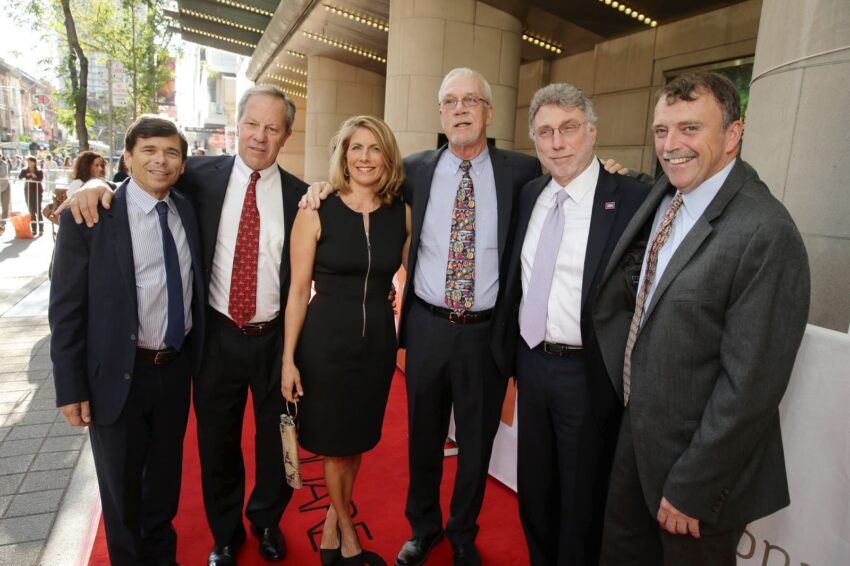
Baron Rejects Claims About His Diversity Record
Martin Baron departed the Washington Post last month amid accolades for its journalism and its profitability during his eight-year tenure as executive editor.
But not everyone is giving kudos. At the end of a story Thursday on the revival of The Emancipator (see previous item), Axios’ Russell Contreras challenged Baron’s diversity record at their previous paper, The Boston Globe. Baron replies that Contreras has his facts wrong.
 “Flashback,” Contreras (pictured) began. “The Boston Globe, then led by editor Martin Baron, won the 2003 Pulitzer prize for its investigation into the Catholic Church sexual abuse legacy.
“Flashback,” Contreras (pictured) began. “The Boston Globe, then led by editor Martin Baron, won the 2003 Pulitzer prize for its investigation into the Catholic Church sexual abuse legacy.
- “But Baron also faced criticism from the paper’s journalists of color after a hiring spree of 19 all-white staffers that the Black and Latino reporters called ‘the 19-o shutout.’
- “A few years later after a series of buyouts, Baron again faced scrutiny when 11 more all-white staffers were hired and few editors of color were left.”
Asked for comment, Baron messaged Journal-isms, “The fact is that overall diversity in the Boston Globe newsroom rose significantly during my 11 1/2 years there, and my recollection is that we exceeded the ASNE [American Society of News Editors] guidelines for diversity parity with the population of our circulation area.
“Diversity was a high-priority goal of mine and all managers, and we regularly monitored our performance. I don’t recall any hiring spree of only whites that Russ cites, and I feel certain he is factually incorrect. Given the many years of cutbacks at the Globe, there were no ‘hiring sprees’ of any sort. Russ himself was among the individuals I hired at the Globe, where he worked for slightly more than three years. I was pleased to have him on staff.”
As NPR’s David Folkenflik said last year, under Baron the Post “has gone since from a staff of 580 to now more than a thousand, the largest news staff in its existence. And that’s really built on the backbone of the reporting of the staff and a lot of the leadership that Marty Baron showed.”
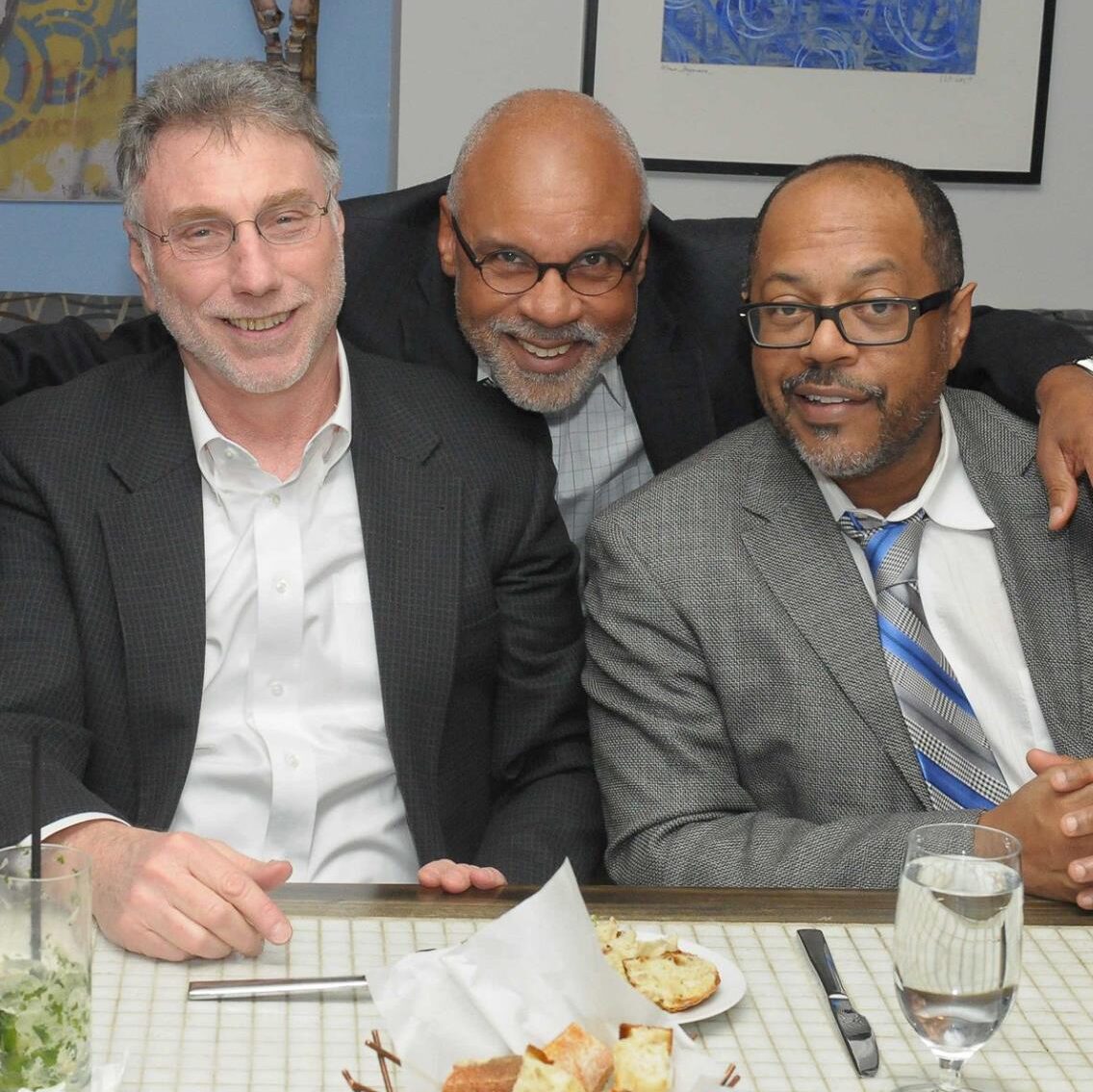 Still, as Baron left the Globe in 2012, a Black journalist in Boston messaged privately, “Globe is clueless about the communities of color in its midst,” a comment that can be offered about many metro dailies. Yet in 2013, Baron named the Post’s first African American managing editor in Kevin Merida, who left 33 months later to oversee ESPN’s The Undefeated. (Merida, at right, is pictured with Baron, left, and journalist Fred Sweets in 2014 at a Journal-isms Roundtable. Photo by Jason Miccolo Johnson).
Still, as Baron left the Globe in 2012, a Black journalist in Boston messaged privately, “Globe is clueless about the communities of color in its midst,” a comment that can be offered about many metro dailies. Yet in 2013, Baron named the Post’s first African American managing editor in Kevin Merida, who left 33 months later to oversee ESPN’s The Undefeated. (Merida, at right, is pictured with Baron, left, and journalist Fred Sweets in 2014 at a Journal-isms Roundtable. Photo by Jason Miccolo Johnson).
Despite that, as Folkenflik noted, “you saw BLM [Black Lives Matter] bubble up inside The Washington Post newsroom, questions of representation for people of color, people who had been kept to the side. That felt — was felt in a lot of newsrooms but very acutely at the Post as well.”
In the aftermath of the Minneapolis police killing of George Floyd last May, the Post announced more than a dozen newsroom positions to be focused on race, including a managing editor for diversity and inclusion.
“This is a historic moment in American history and in race relations,” Baron said in a June 18, 2020, statement. “It requires us to re-examine our coverage and concentrate resources on the issues of race, ethnicity and identity that clearly deserve heightened attention.
“With this expansion, we will be more inclusive in our journalism, providing broader and deeper reporting that today’s social reckoning demands.”
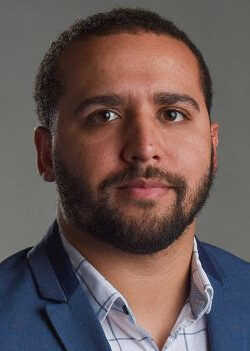 Wesley Lowery (pictured), an acclaimed Black journalist who was hired by Baron at the Post after working with him at the Globe, left the Post last year in a dispute over use of social media. “The views and inclinations of whiteness are accepted as the objective neutral. When black and brown reporters and editors challenge those conventions, it’s not uncommon for them to be pushed out, reprimanded or robbed of new opportunities,” Lowery wrote June 23 in The New York Times.
Wesley Lowery (pictured), an acclaimed Black journalist who was hired by Baron at the Post after working with him at the Globe, left the Post last year in a dispute over use of social media. “The views and inclinations of whiteness are accepted as the objective neutral. When black and brown reporters and editors challenge those conventions, it’s not uncommon for them to be pushed out, reprimanded or robbed of new opportunities,” Lowery wrote June 23 in The New York Times.
Hamilton Nolan quoted Lowery on Baron in January in Columbia Journalism Review: Even “as we’ve had our disagreements in public and private, there’s no question that the Post is likely doing the best pound-for-pound, day-in-and-day-out journalism in the organization’s history and has found a way to not only survive but thrive economically at a time of extreme peril for journalism — for which Marty deserves a ton of credit.”
Lowery added, however, that “some of the major challenges facing whoever succeeds him are the very things Marty failed to do during his tenure: assembling a newsroom and leadership structure that actually reflects the diversity of the nation — and world — it covers, figuring out how to nurture people with voices and experiences that differ from a white DC media establishment status quo, and figuring out a path forward in a social media world that manages to protect the reputation of the Post but does not rely on selectively punishing people based on incomprehensible and unequally enforced policies and the unpredictable moods of the executive editor.”
[Both Baron and Contreras are standing by their accounts. Contreras wrote on Facebook Sunday, “Thank you Richard Prince for citing my Axios story. I give Marty Baron respect and learned a lot from him while I was at the Globe. But my story is accurate.
[“After arriving at the Globe, older journalists of color told me about the 19-0 shutout when 19 straight white staffers were hired. Derrick Z Jackson and others spoke out about it at the time. Gregory Hampton Lee Jr. was hired in sports as a result. I came soon after. I also know the 11-0 all-white hiring spree occurred, because myself, Greg and Keith Reed spoke out against that. We met with Marty to express our concerns. He told us he was proud that around 25% of the newsroom was journalists of color. I pointed out that Boston was majority-minority , which meant we were behind. Marty taught us to be accurate and hold people accountable. I stand by my story.”
[Baron then replied, “The ASNE parity guideline is based on circulation area, not the city where a news organization is based. The Globe’s circulation area is far greater than the city of Boston. The Globe exceeded the ASNE guidelines. Russ is incorrect when he says the Globe fell behind the guidelines. And again, diversity improved significantly during my tenure there.”
[Kenneth J. Cooper, a senior editor at WGBH News and national editor at the Globe from 2001 to 2005, messaged on Monday:
[“There was a 12-month period, from April 2003 to April 2004, when Marty Baron hired 13 people into various newsroom jobs at the Globe, and not one was black. I was national editor then and participated in a meeting in his office — along with assistant features editor Ann Scales, op-ed columnist Derrick Jackson and others — where we pointed out the pattern and discussed it with him.
[“He was responsive, not long afterwards hiring Greg Lee from the Washington Post as the number three editor in the sports department and agreeing, at our request, to give the newsroom recruiter Paula Bouknight the title of assistant manager editor, which we thought would increase her clout. But for an entire year he forgot to hire any black people.”]
- Dan Froomkin, Salon.com: How the Washington Post’s departing editor blew it on newsroom diversity — and why he’s not alone
- Journal-isms: Will the “Spotlights” Shine in Many Colors? (Jan. 10, 2016)
- Kojo Nnamdi, “Kojo Nnamdi Show,” WAMU-FM, Washington: Marty Baron On The Post, Retirement And The Future Of Journalism (Feb. 23)
- Marc Tracy, New York Times: How Marty Baron and Jeff Bezos Remade The Washington Post (Feb. 27)
- Robert Weisman, Boston Globe: 11-year Globe editor Martin Baron to depart: Will take reins at Washington Post (Nov. 14, 2012)
Miami Herald columnist Leonard Pitts talks with editorial board editor Nancy Ancrum about trust and the media. (Miami Herald video by Justin Azpiazu)
Who Needs Men on Editorial Boards?
Nancy Ancrum, editorial page editor of The Miami Herald, is, of course, a woman. She ascended to that job in 2013, succeeding another woman, Myriam Marquez. On the news side, Monica R. Richardson became executive editor late last year, succeeding Aminda (Mindy) Marques Gonzalez.
A few months ago, Ancrum got the green light to expand her board.
“I’ve hired Amy Driscoll, a long-time Herald newsroom leader as deputy editorial page editor; and went outside to bring on board Isadora Rangel, opinion editor for Florida Today as an editorial writer. Third, we have Lauren Costantino, who is our dedicated growth editor. (She does not report to me, though.) With Editorial Board stalwart Luisa Yanez still with us, I have a full(er) house!” she messaged this month.
An all-female editorial board.
The concept seems a victory for feminine inclusion, but what about for diversity?
What happens, for example, when an issue specifically concerning men arises? For example, laws and practices concerning custody rights in divorce cases?
Ancrum told Journal-isms by telephone that such cases haven’t surfaced. If they did, she and other board members would seek out men’s views.
As she says on her LinkedIn profile, as “Editorial Page Editor of the Miami Herald, my commitment is to provide a forum for the broadest range of voices possible, within South Florida and beyond. And, as a co-founder of the successful community-engagement initiative, I am equally committed to encouraging people to reach beyond and engage others beyond their areas of comfort and familiarity. It’s imperative to building a stronger, more resilient community. I am on the lookout for well-written, authoritative and fact-driven — but not stodgy — opinion pieces to add depth to the mix of voices and issues featured on our Other Views oped page.”
Also, Ancrum says, the board has diversity among the women; they don’t all think alike. She also argues that “we don’t have a homeless person or an LGBT person on the board, as far as I know,” yet those topics are subjects of editorials. The arguments are reminiscent of those made by institutions that lack racial diversity, but perhaps diversity issues play out differently with gender.
It’s a different approach from that taken when USA Today was created. The late John Quinn told Journal-isms on the newspaper’s 25th anniversary, “It was a little frustrating.” Quinn, who was Gannett’s chief news executive in those early days, recalled, “Some of my colleagues would say, ‘I know this great person who can do what we want.’ We said, ‘We’ve got a lot of those; we’ve got to have somebody else’ who could add to the diversity of age, gender, race and geography.
For the record, Ancrum says she was not looking for an all-female board. In her hiring, “we’re guided only by the skills we needed, and the people brought the skills in editorial writing and digital proficiency.” She adds, “the women brought what I needed.”
 Separately, the National Association of Hispanic Journalists came to the defense of Rangel (pictured), one of the Herald’s new hires, after “the Brevard County Commissioners’ ill-positioned mockery” of Rangel as a Brazilian immigrant.
Separately, the National Association of Hispanic Journalists came to the defense of Rangel (pictured), one of the Herald’s new hires, after “the Brevard County Commissioners’ ill-positioned mockery” of Rangel as a Brazilian immigrant.
“On February 9th, the Brevard County Commission, consisting of all Republicans, used their political platform and elected positions to make unwarranted jabs at Rangel’s immigrant background and her work for Florida Today’s editorial board,” NAHJ said in a Feb. 17 statement.
“Commissioner Bryan A. Lober made an issue of Rangel’s Brasilian origins by stating, ‘Ms. Rangel deserves recognition for selflessly remaining in this country, [notwithstanding] our nearly tenfold higher per capita GDP and approximately one-sixth the murder rate of the country from which she hails.’
“Rangel immigrated to the U.S. in 2006 and is now a permanent U.S. resident. While at Florida Today, she worked as an engagement editor, served on the editorial board and wrote an opinion column. Part of her job entailed writing about the issues impacting Brevard County and holding officials accountable for their decisions. In her column, Rangel criticized the commission’s resolution processes and decision-making amid the pandemic. . . .”
. . . McClatchy Wants Community Advisory Boards
The Miami Herald serves one of the McClatchy company’s 30 markets.
“In recent years, opinion editors at McClatchy have looked for ways to increase the diversity of voices in their sections,” Sarah Scire wrote Tuesday for Nieman Lab.
 “Soliciting op-eds from the community and recruiting new columnists can help, but the process can feel, to some, like checking a box. Now, under a new national opinion editor, the newspaper chain will try to inject a range of perspectives earlier and more often in the editorial process.
“Soliciting op-eds from the community and recruiting new columnists can help, but the process can feel, to some, like checking a box. Now, under a new national opinion editor, the newspaper chain will try to inject a range of perspectives earlier and more often in the editorial process.
“McClatchy is rolling out 12 community advisory boards, one for each of its opinion teams. It’s also, for the first time, publishing five principles — including advocating for social justice and police reform, creating a roadmap for the post-pandemic economy, and examining the rural-urban divide in America — that it will use to guide its opinion coverage in newspapers across the country.
“ ‘By the end of the year,’ McClatchy’s new national opinion editor, Peter St. Onge (pictured above), promised, ‘all of our opinion teams will have advisory boards.’
“As McClatchy opinion editor — a job he takes on in addition to his role as North Carolina editor at The Charlotte Observer and The News and Observer in Raleigh — St. Onge will work with a dozen editors in cities across the country. . . .”
- Peter St. Onge, Charlotte Observer: We’re bringing more voices to Editorial Board conversations (Feb. 12)

Breonna Taylor Case Is Subject of Graphic Novel
This year’s Sunshine Week, an annual news industry effort to spotlight open-government issues, ended Saturday, but the struggles remain.
For its 16th year, the commemoration highlighted transparency issues over the last year. The Gannett Co. contributed a graphic novel about the Breonna Taylor case by editorial cartoonist Mike Thompson of USA Today and the Detroit Free Press.
The novel is titled, “Breonna Taylor killing highlights importance of Sunshine Laws.”
As ZZ Packer explained last September in The New Yorker, “Taylor, a twenty-six-year-old E.M.T., had finished back-to-back shifts and was dozing off with her boyfriend, Kenneth Walker, when three Louisville Metro Police Department officers, who were dressed in plain clothes, knocked on her door and then broke it down with a battering ram.
“Her boyfriend shot in the direction of the threat — toward the door. The three policemen proceeded to empty more than thirty rounds into Taylor’s apartment, killing her. The only indictment was for Brett Hankison, who, in firing his weapon without a clear target and into the adjacent apartments, was alleged to have acted in a manner that rose to ‘wanton endangerment.’
“His actions were deemed to have fallen short of ‘wanton manslaughter,’ as none of his bullets were, according to Kentucky’s attorney general, Daniel Cameron, the fatal one that ended Taylor’s life.”
Bill Campbell, Chicago TV Veteran, Dies at 70
“When he began what would be his long-running and influential WLS-Ch. 7 community showcase program called ‘Chicagoing’ in 1989, Bill Campbell, the station’s director of community services, interviewed the writer Studs Terkel. After the interview was over, Terkel gave a terse but spot-on assessment of the host, saying, ‘Smart guy. Good guy. Quick mind,’ “ Rick Kogan wrote Friday for the Chicago Tribune.
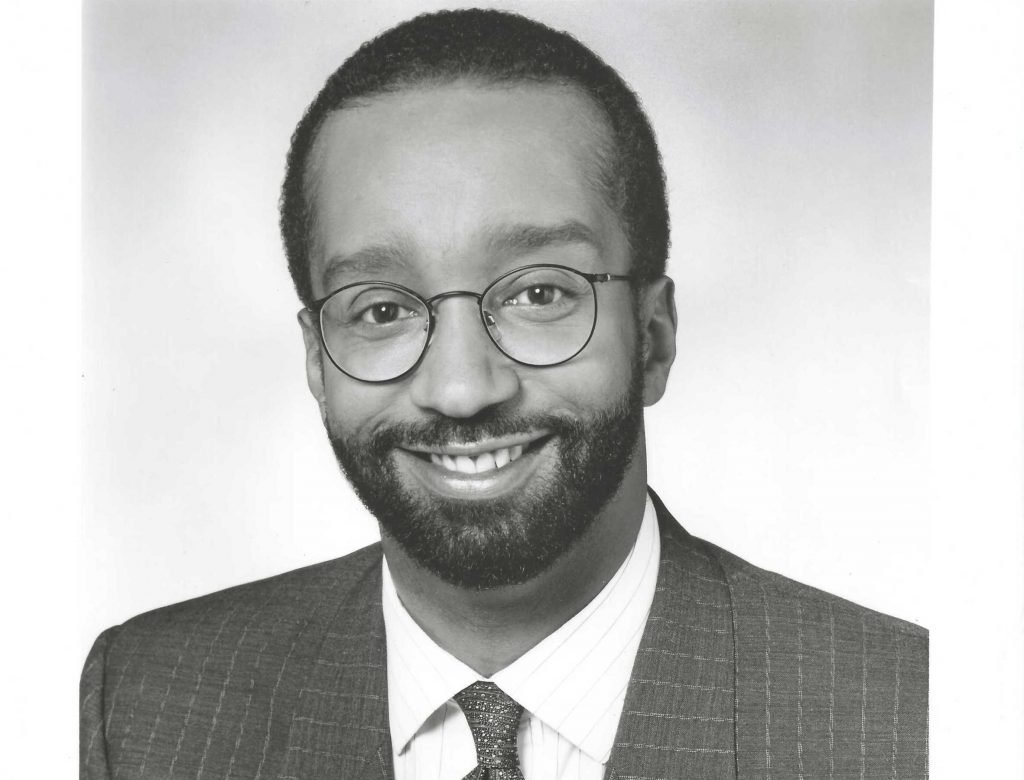 “Campbell (pictured) was that and more. An erudite and palpably curious man, he was one of the most prominent Black faces and voices in the largely white world of local news. He was also a mentor and ever available, whether as member of the National Association of Black Journalists or on his own time, to talk with young people who aspired to jobs in the media.
“Campbell (pictured) was that and more. An erudite and palpably curious man, he was one of the most prominent Black faces and voices in the largely white world of local news. He was also a mentor and ever available, whether as member of the National Association of Black Journalists or on his own time, to talk with young people who aspired to jobs in the media.
“A South Side native, Campbell died Wednesday at Symphony Evanston Healthcare, where he had been recovering from a series of ailments that battered him in the wake of a 2017 stroke. He was 70 years old. . . .”
Kogan also wrote, “What would be a 32-year-long TV run began with a high-profile position at WLS-Ch. 7 when he was hired in 1978 as director of editorials, a job that entailed delivering, in his own words, the views of station management on the important issues of the moment. He did so in an intelligent and thoughtful fashion for a decade that was sprinkled with local Emmy awards for his work. . . .
“When he suffered a stroke in 2017, many friends and colleagues offered support, starting a GoFundMe page to help with medical costs.” On Sunday, more than 204 donors had exceeded $18,000 toward a $200,000 goal.
Maudlyne Ihejirika added in the Chicago Sun-Times, ” ‘He would come to NABJ-Chicago meetings and immediately approach some young person in high school or college, sit down and talk with them,’ said retired NBC 5 anchor Art Norman, board member emeritus of the Black journalists group.
“ ‘And when the meeting was over, our then-president Warner Saunders would be like, “Man, we gotta go.” And he’d say, ‘I’m coming. I’m coming.’ But he’d still be talking to the young people. He just loved them. He was always available to them, even giving them his phone number. He was just sheer class, such a good brother to lean on. I’m going to miss him. ‘”
To subscribe at no cost, please send an email to journal-isms+subscribe@groups.io and say who you are.
Facebook users: “Like” “Richard Prince’s Journal-isms” on Facebook.
Follow Richard Prince on Twitter @princeeditor
Richard Prince’s Journal-isms originates from Washington. It began in print before most of us knew what the internet was, and it would like to be referred to as a “column.” Any views expressed in the column are those of the person or organization quoted and not those of any other entity. Send tips, comments and concerns to Richard Prince at journal-isms+owner@
View previous columns (after Feb. 13, 2016).
View previous columns (before Feb. 13, 2016)
- Diversity’s Greatest Hits, 2018 (Jan. 4, 2019)
- Book Notes: Is Taking a Knee Really All That? (Dec. 20, 2018)
- Book Notes: Challenging ’45’ and Proudly Telling the Story (Dec. 18, 2018)
- Book Notes: Get Down With the Legends! (Dec. 11, 2018)
- Journalist Richard Prince w/Joe Madison (Sirius XM, April 18, 2018) (podcast)
- Richard Prince (journalist) (Wikipedia entry)
- February 2018 Podcast: Richard “Dick” Prince on the need for newsroom diversity (Gabriel Greschler, Student Press Law Center, Feb. 26, 2018)
- Diversity’s Greatest Hits, 2017 — Where Will They Take Us in the Year Ahead?
- Book Notes: Best Sellers, Uncovered Treasures, Overlooked History (Dec. 19, 2017)
- An advocate for diversity in the media is still pressing for representation, (Courtland Milloy, Washington Post, Nov. 28, 2017)
- Morgan Global Journalism Review: Journal-isms Journeys On (Aug. 31, 2017)
- Diversity’s Greatest Hits, 2016
- Book Notes: 16 Writers Dish About ‘Chelle,’ the First Lady
- Book Notes: From Coretta to Barack, and in Search of the Godfather
- Journal-isms’ Richard Prince Wants Your Ideas (FishbowlDC, Feb. 26, 2016)
- “JOURNAL-ISMS” IS LATEST TO BEAR BRUNT OF INDUSTRY’S ECONOMIC WOES (Feb. 19, 2016)
- Richard Prince with Charlayne Hunter-Gault,“PBS NewsHour,” “What stagnant diversity means for America’s newsrooms” (Dec. 15, 2015)
- Book Notes: Journalists Follow Their Passions
- Book Notes: Journalists Who Rocked Their World
- Book Notes: Hands Up! Read This!
- Book Notes: New Cosby Bio Looks Like a Best-Seller
- Journo-diversity advocate turns attention to Ezra Klein project (Erik Wemple, Washington Post, March 5, 2014)

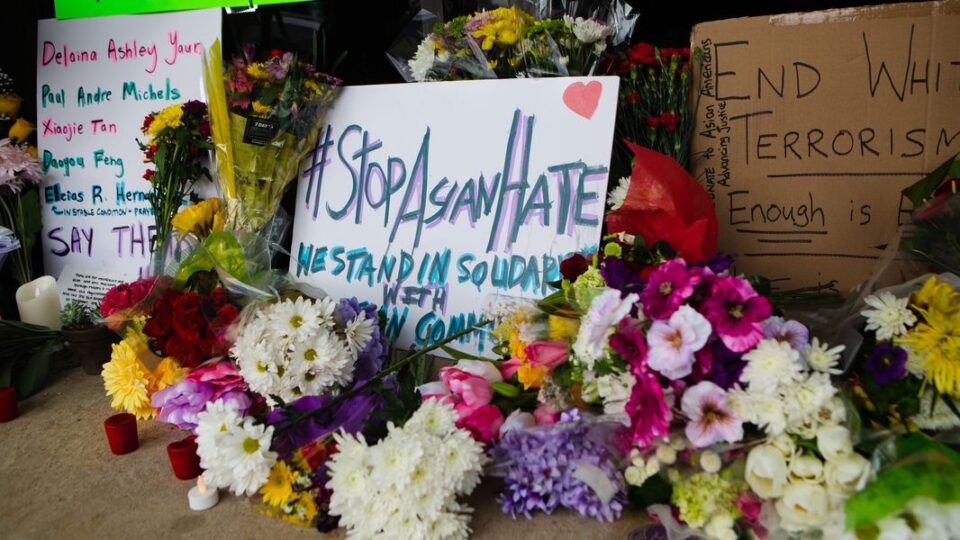
1 comment
From Russell Contreras on the item about Marty Baron (from Facebook):
Russell Contreras
Thank you Richard Prince for citing my Axios story. I give Marty Baron respect and learned a lot from him while I was at the Globe. But my story is accurate. After arriving at the Globe, older journalists of color told me about the 19-0 shutout when 19 straight white staffers were hired. Derrick Z Jackson and others spoke out about it at the time. Gregory Hampton Lee Jr. was hired in sports as a result. I came soon after. I also know the 11-0 all-white hiring spree occurred, because myself, Greg and Keith Reed spoke out against that. We met with Marty to express our concerns. He told us he was proud that around 25% of the newsroom was journalists of color. I pointed out that Boston was majority-minority , which meant we were behind. Marty taught us to be accurate and hold people accountable. I stand by my story.